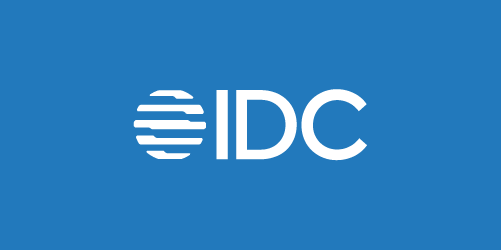By injecting private data into large language models, RAG enhances LLM AI learning for more personalized, precise, and pertinent answers to user queries.
What is LLM AI learning?
It’s no secret: AI is all the rage. From tech funding to trendy consumer goods, AI is quickly becoming the magic ingredient every company wants more of.
In the AI landscape, it’s the Large Language Models (LLMs) behind the recently popularized ChatGPT, Copilot, and Gemini that are gaining a lot of attention. And that makes sense, because LLMs have a lot going for them. They’re super powerful neural networks with the ability to digest enormous amounts of information and then use it to respond to user queries at lightning speed. But they also have a couple of major drawbacks.
First, they’re based on publicly available, static information. Without access to a specific user’s preferences or past interactions or transactions, they’re only able to give generalized answers that could basically apply to anyone. In a consumer market where personalization is everything, LLMs lack the ability to produce specific enough answers to satisfy most users.
Second, they can be inconsistent. LLMs are great at providing quick answers to a wide variety of questions, but they’re also prone to AI hallucinations (presenting misleading and/or incorrect information as facts).
In short, LLMs excel at providing quick general answers to lots of different questions but aren’t very good at providing a personalized answer to a specific person. That’s where Retrieval-Augmented Generation (RAG) comes in.
The RAG-LLM-AI learning connection
Retrieval-augmented generation is an AI framework that dynamically integrates private enterprise data with the publicly available information that LLMs are trained on. In so doing, RAG adds context to the question – as well as to the questioner – to help the LLM respond more personally, accurately, and reliably.
The effectiveness of the RAG-LLM relationship is demonstrated in the following example. Jill, a telco customer, asks her operator’s chatbot to help restore her Internet service, which suddenly went down on June 1st.
Here’s how the bot might respond:
|
Before RAG |
After RAG |
|
You reported your Internet is down. |
Hi Jill, according to our records, the last time you paid your monthly bill was January 31st. We sent you 3 emails (on March 1st, April 1st, and May 1st) informing you that your Internet service would be terminated on June 1st if the bill was not settled. |
The RAG-aided response shows AI personalization at its best – enabled by augmenting the LLM with information from knowledge bases and data retrieved from enterprise systems.
Beyond personalization, RAG also helps keep an LLM current, because the information it was trained on is basically outdated the moment it’s released. And retraining your LLM is a major drain on time and money, making RAG a much more cost-effective and efficient way to provide better and more personalized responses.
In a 2024 Gartner RAG report, the analyst provides some valuable tips for grounding LLMs with relevant internal data, such as focusing your scope, selecting your use case, classifying your data, making your data RAG-friendly, and choosing your technology.
Get the condensed version of the Gartner RAG report free of charge.
How RAG-based LLM AI learning works
True to its name, retrieval-augmented generation inserts a data “retrieval” component into the AI-aided response “generation” process to improve the relevance and reliability of the resultant answers.
The retrieval model locates, chooses, and prioritizes the most relevant information and data based on the user and the query, and then transforms it into an enriched, contextual prompt that triggers the LLM. The LLM then generates an accurate and personalized response to the user’s question.
Imagine a courtroom, where the judge relies on a huge library of law books. To effectively rule on a niche topic, the judge may consult with an expert advisor in that area. In such a case, the judge’s library and personal knowledge are the LLM and the advisor is the retrieval model.
This example also illustrates the relative size and role of each player. The LLM (judge and library) dwarfs the retrieval model (advisor) in terms of size – imagine massive haystacks of information contained in the LLM, compared to the valuable needles of data that the retrieval model uncovers. And in terms of role, while RAG may be consulted, the LLM is the ultimate authority and decision-maker.
In addition to making answers more personalized and relevant, RAG also reduces the risk of an LLM hallucination. By enhancing the accuracy and reliability of AI-aided generation with data ingested from internal enterprise systems, RAG greatly expands the possible use cases for LLMs and paves the way for a new future in how companies could leverage LLMs in consumer interactions.
RAG-based LLM AI learning use cases
When it comes to RAG and AI, the potential is practically limitless. For example, in:
-
Healthcare, a drug interaction database could be used by practitioners to avoid prescribing conflicting medications.
-
Financial services, brokerages could benefit from real-time market analysis, to gain a competitive edge over those relying on publicly available data only
-
Media and telecommunications, live broadcasts could use RAG to create up-to-date commentary on emerging stories
-
Retail, chatbots could be supplied with relevant information about a specific constomer, allowing them to tailor their responses based on transaction histories and preferences
Let’s focus on the RAG chatbot to better understand the benefits that RAG and AI deliver.
Take an HR chatbot used by employees to understand how company policies and procedures affect them as individuals. With LLM alone, the chatbot would be limited to generating generalized answers that apply to everyone. It would have no access to data about specific employees, such as where they live, relating to policies based on geographical location, or how long they’ve been employed, when it comes to sick leave or vacations.
However, if the LLM were augmented with fresh data about the user, it would provide a more personalized and accurate response – by integrating the employee-specific information with the company’s general terms and conditions.
Data products enhance RAG-based LLM AI learning
In terms of enterprise AI, RAG architecture is reshaping LLM AI learning.
By taking a data-as-a-product approach, you can power RAG with fresh, trusted data from your very own systems.
Generative data products access entity datasets in numerous ways – whether through API, streaming, CDC, or any combination of methods – to aggregate relevant data from disparate source systems.
A data product platform feeds customer 360 or product 360 data into RAG frameworks in real time, enabling more personalized and relevant answers to user questions.
From hyper-personalized emails, that cater specifically to an individual user’s needs and preferences, to improved fraud detection, that reacts instantly to suspicious activity in a customer’s account, data products offer an unprecedented level of personalization, while delivering real-time insights you can trust.
Discover K2view GenAI Data Fusion, the only RAG tools based on data products.
















